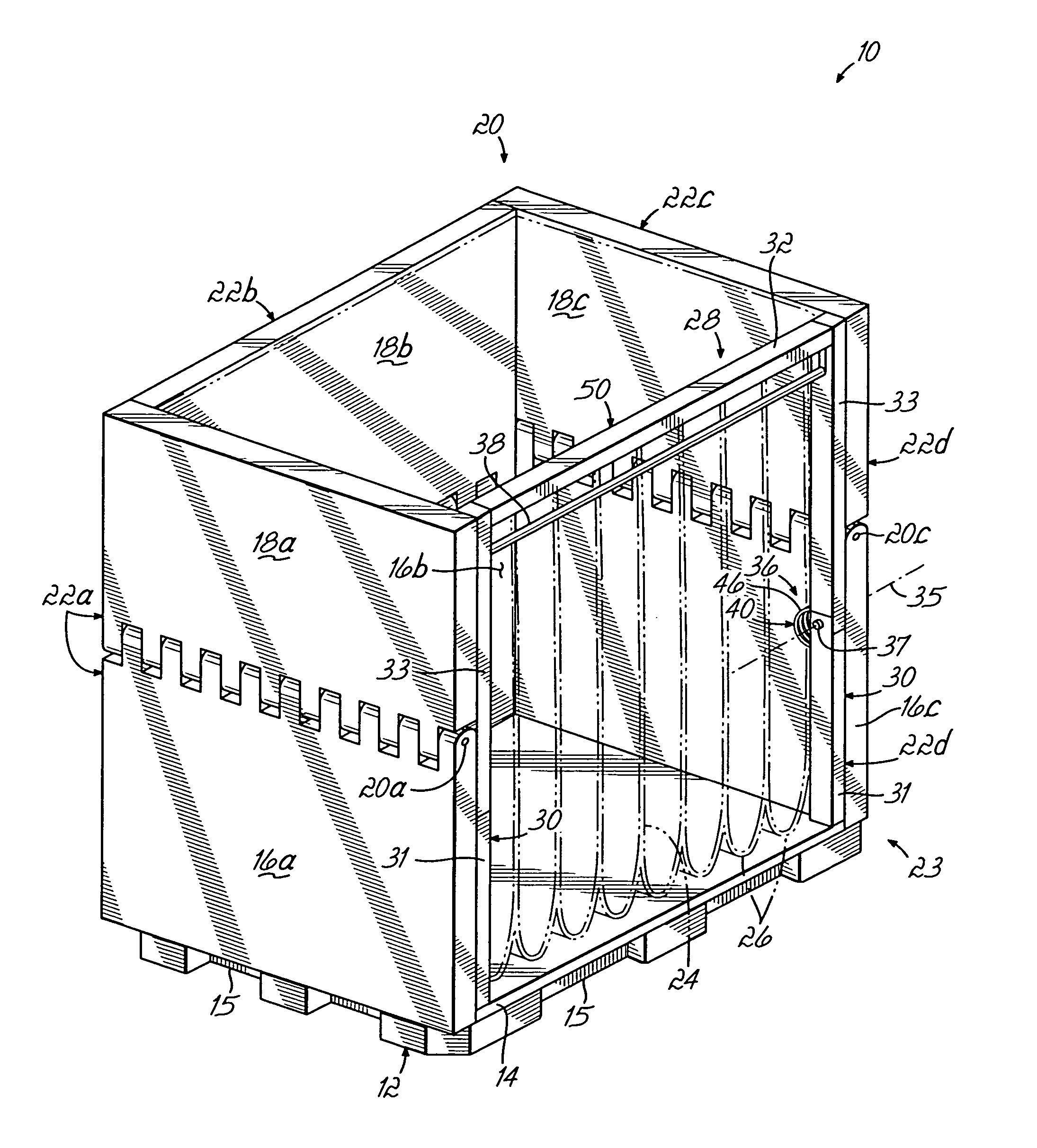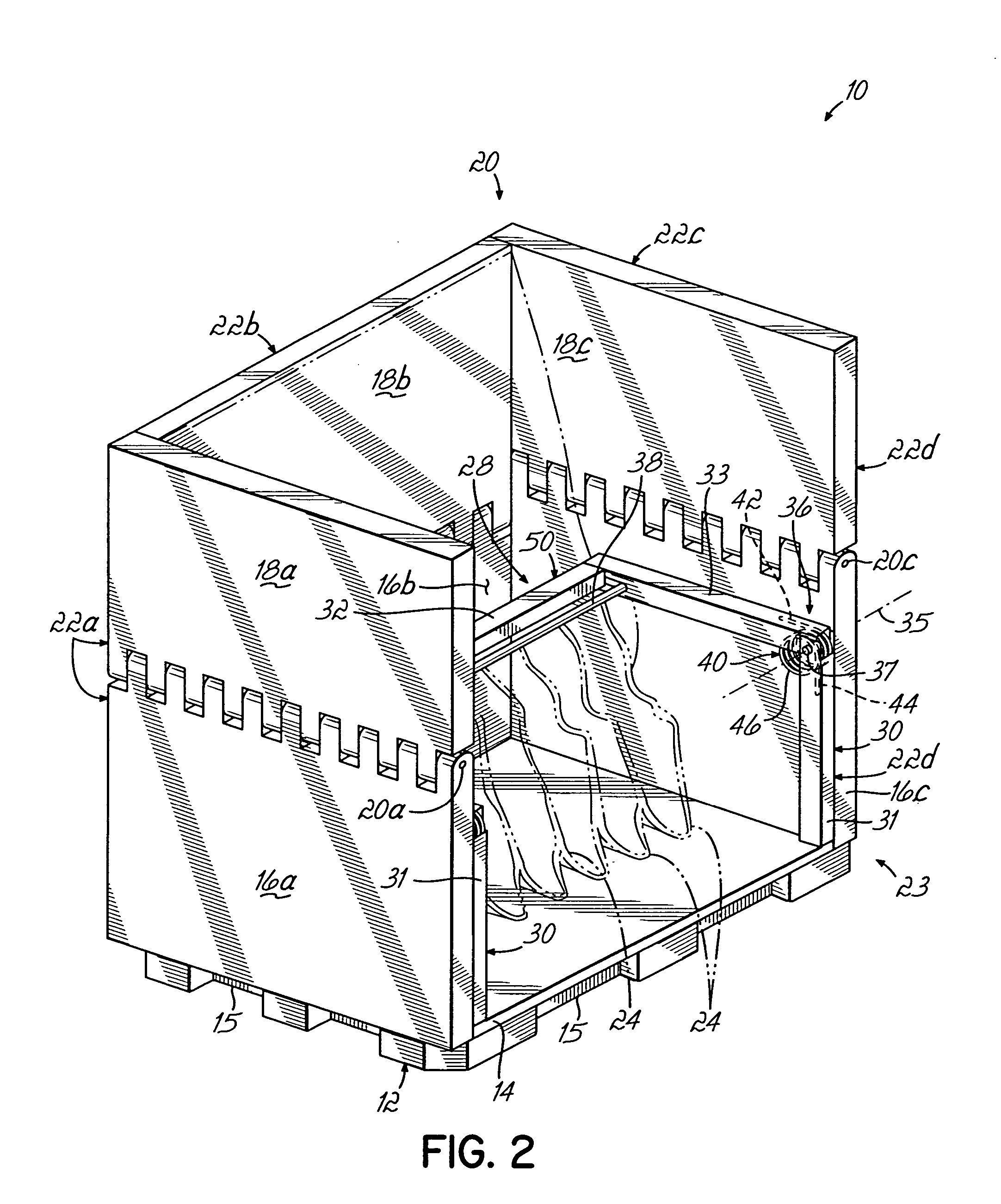Collapsible container with dunnage erection biaser
a dunnage erection and container technology, applied in the field of shipping containers, can solve the problems of not much of a shipping cost saving when returning empty reusable containers, the cost of storing conventional reusable containers may further reduce the other economic benefits they offer, and still be relatively costly to provide for their return shipment. the effect of reducing the force needed to erect the containers
- Summary
- Abstract
- Description
- Claims
- Application Information
AI Technical Summary
Benefits of technology
Problems solved by technology
Method used
Image
Examples
Embodiment Construction
[0032]FIG. 1 shows a container 10 having a base 12 having a bottom portion 14 and three fixed, upstanding vertically oriented wall portions 16a, 16b and 16c extending upwardly from the perimeter of the bottom portion 14 of the base 12. A rear wall 18b and side walls 18a, 18c are hingedly connected to the vertically oriented wall portions 16b and 16a, 16c of the base 12, respectively. Side wall 18a is hingedly or pivotally joined to the wall portion 16a of the base 12 with a hinge pin 20a so that the side wall 18a may move or pivot from a collapsed position shown in FIG. 3D to an erected position shown in FIG. 3A. Similarly, rear wall 18b is hingedly or pivotally joined to the wall portion 16b of the base 12 with a hinge pin 20b (see FIG. 3A) so that the rear wall 18b may move or pivot from a collapsed position shown in FIG. 3D to an erected position shown in FIG. 1. Lastly, side wall 18c is hingedly or pivotally joined to the wall portion 16c of the base 12 with a hinge pin 20c so t...
PUM
 Login to View More
Login to View More Abstract
Description
Claims
Application Information
 Login to View More
Login to View More - R&D
- Intellectual Property
- Life Sciences
- Materials
- Tech Scout
- Unparalleled Data Quality
- Higher Quality Content
- 60% Fewer Hallucinations
Browse by: Latest US Patents, China's latest patents, Technical Efficacy Thesaurus, Application Domain, Technology Topic, Popular Technical Reports.
© 2025 PatSnap. All rights reserved.Legal|Privacy policy|Modern Slavery Act Transparency Statement|Sitemap|About US| Contact US: help@patsnap.com



